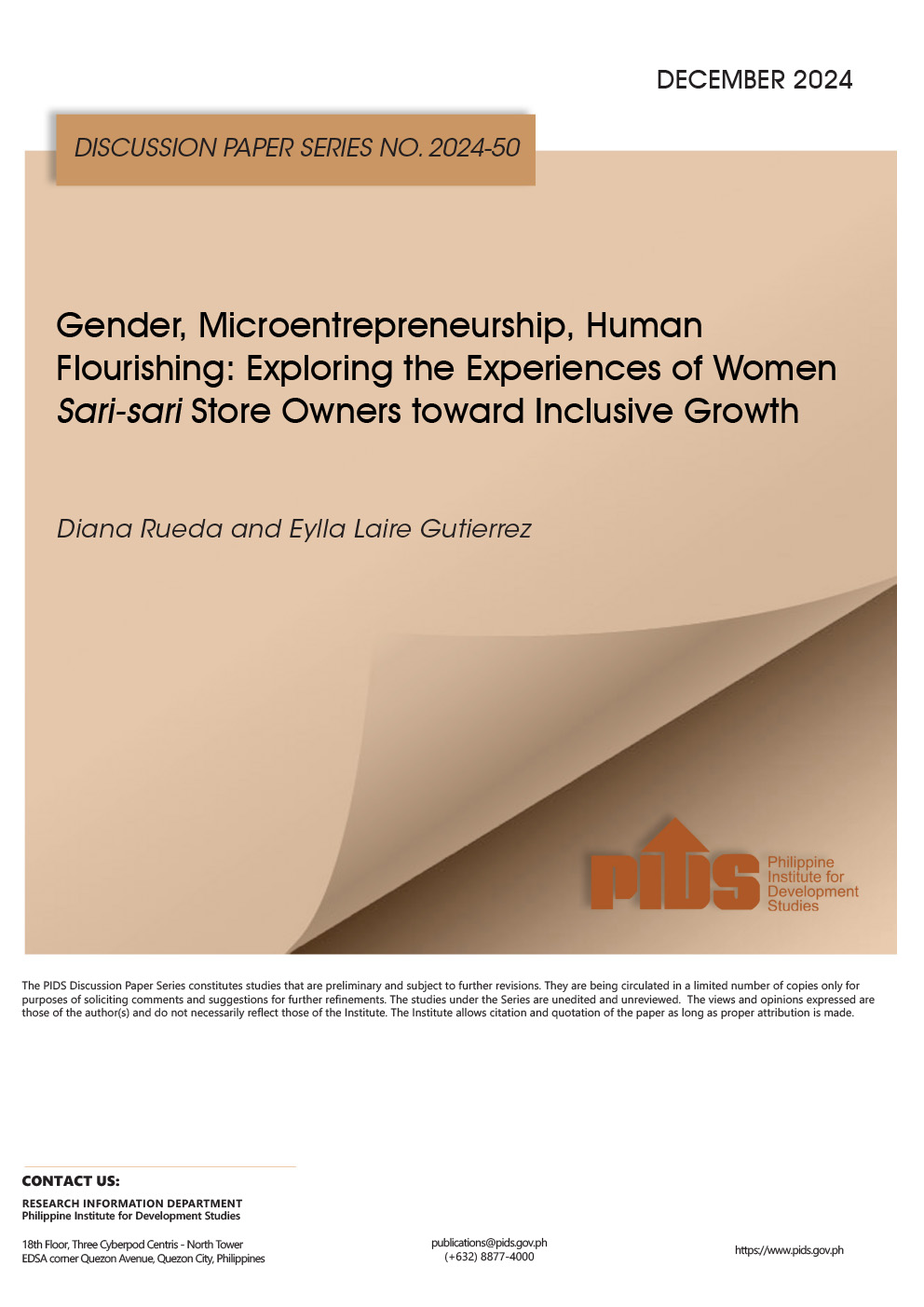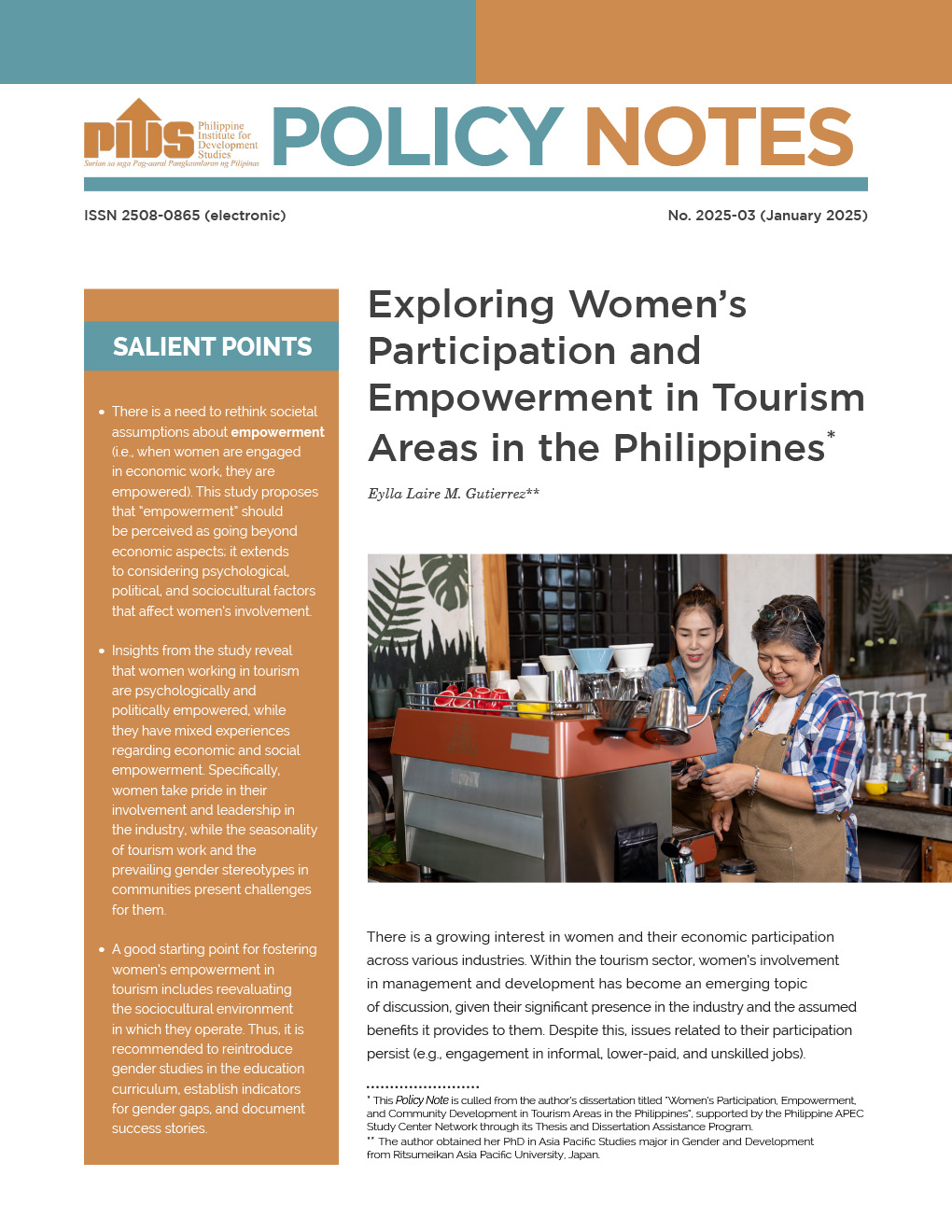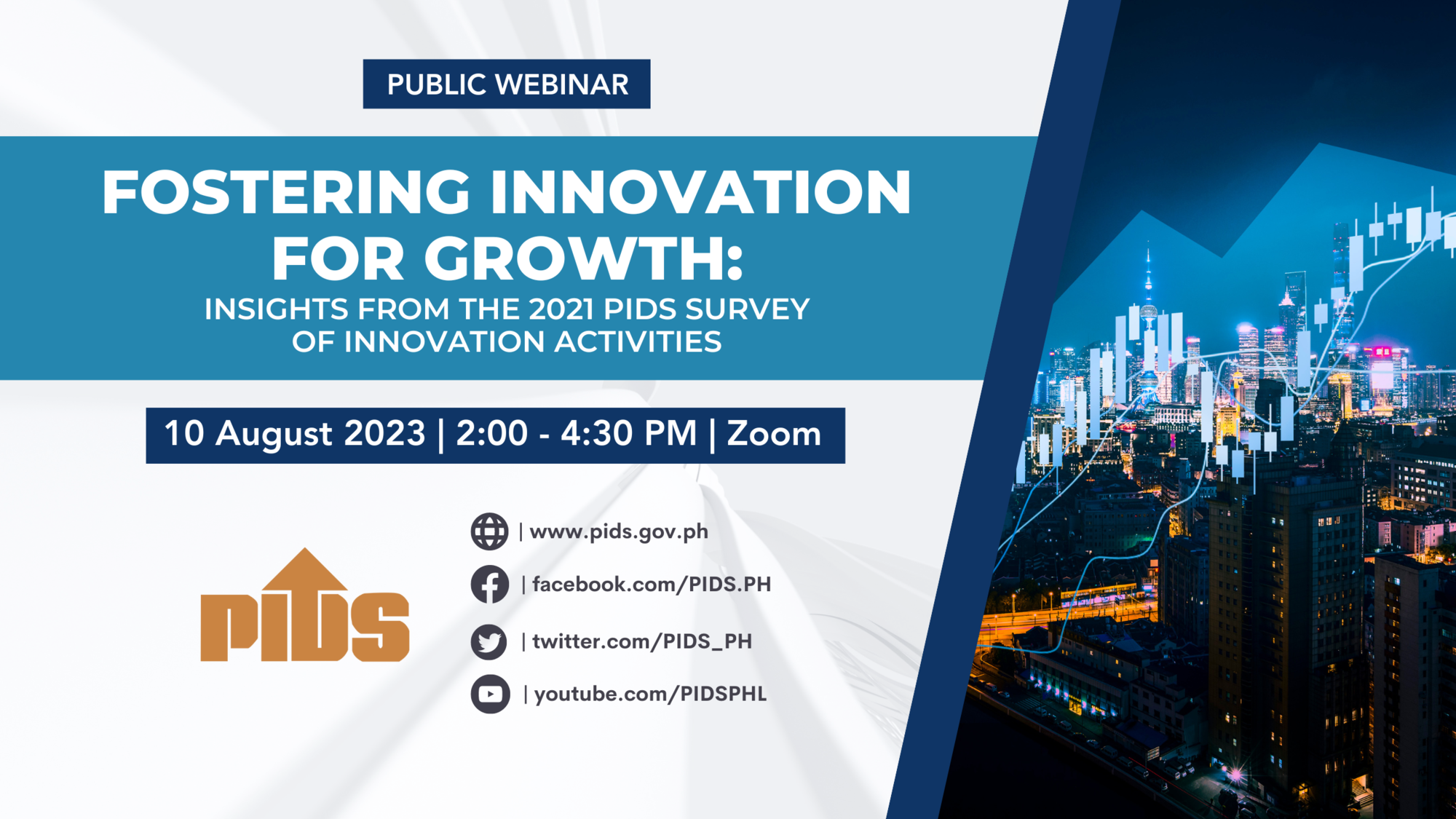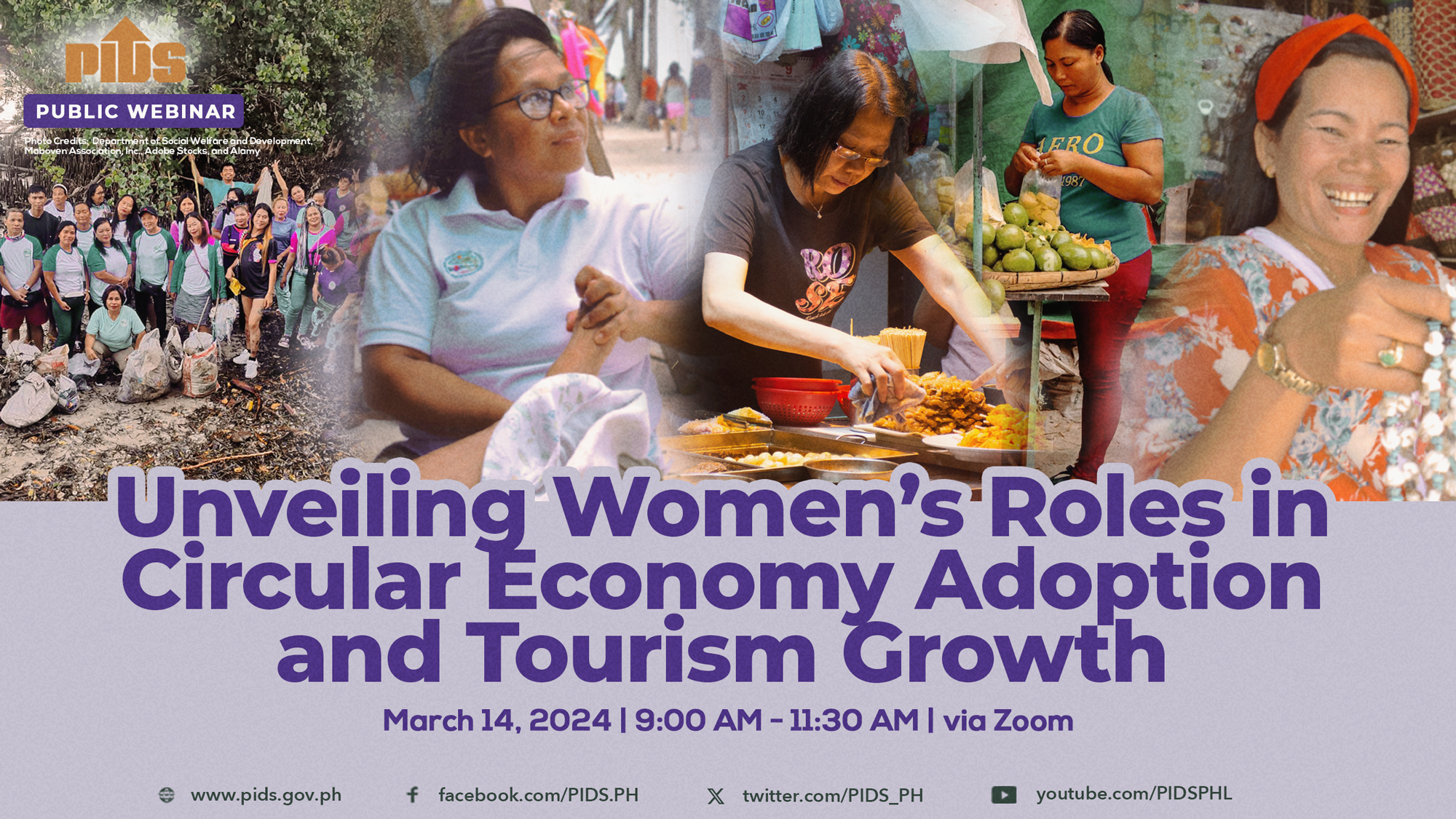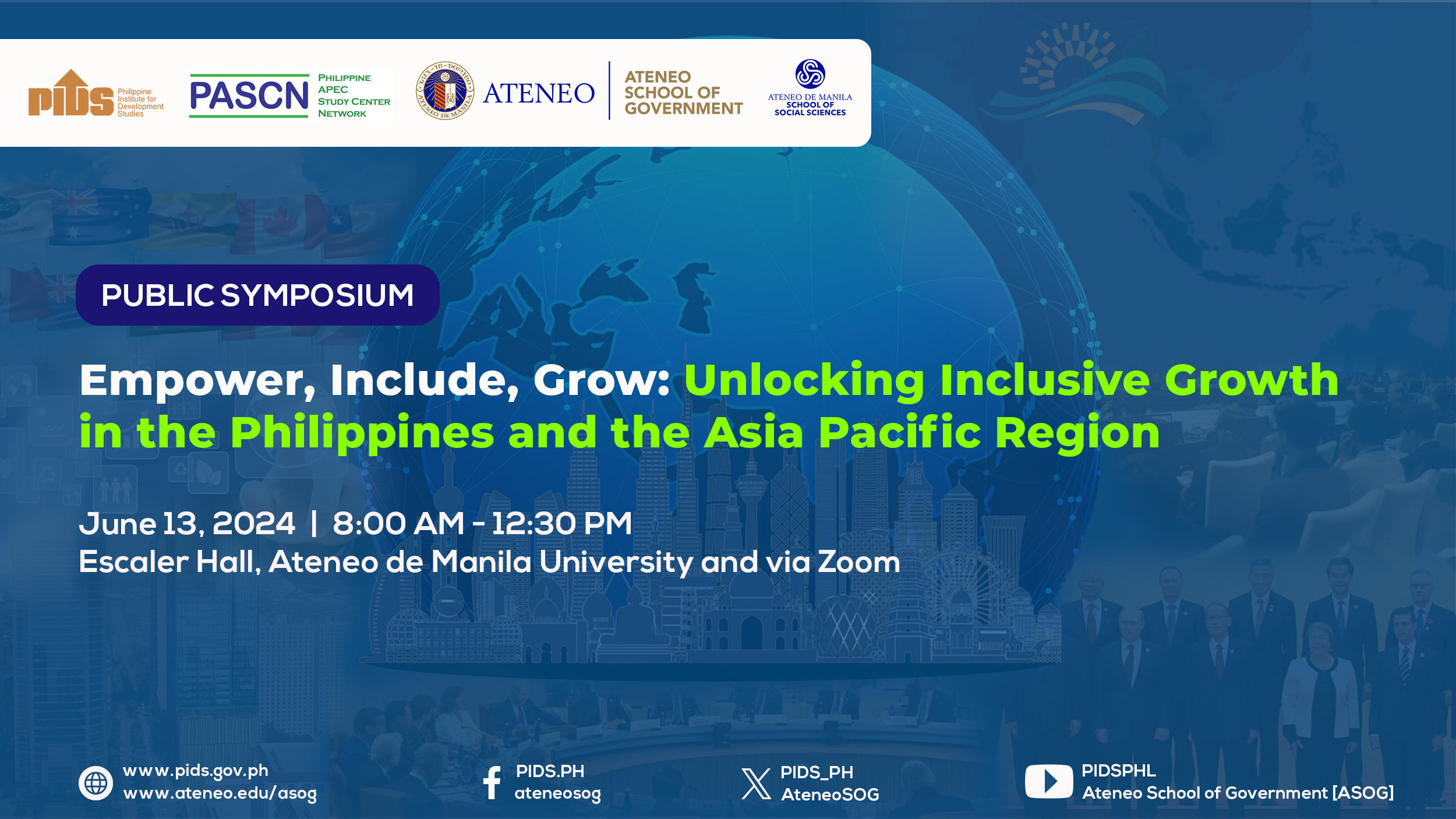THE PHILIPPINE economy could grow at a faster pace this year but will still likely fall below the official target in the face of various risks, a state think tank said in a forum it conducted in Makati City yesterday.
The Philippine Institute for Development Studies (PIDS) sees the local economy growing at 6.8% in 2015, faster than the 6.1% clip last year but below the state’s official target of 7-8%, PIDS Officer-in-Charge and Vice-President Adoracion M. Navarro said in her presentation during the think tank’s "The Philippine Business and Economic Outlook for 2015 and Beyond” forum.
"The biggest drivers are private consumption and government consumption.”
Several risks, however, could weigh on the country’s growth prospects this year, Ms. Navarro said.
Revenues may decline this year as customs collections suffer from the slump in oil prices. Ms. Navarro also said the Bureau of Internal Revenue’s collections would take a hit from revenue losses from additional exemptions on de minimis benefits and the increase in the tax-exemption ceiling for bonuses. "This has serious implications on government spending for infrastructure and social services,” she said.
Monetary policy normalization among advanced economies may also trigger equity price shifts and capital outflows, Ms. Navarro said.
The Philippines, however, will likely withstand financial shocks as the economy has shown resilience from volatilities elsewhere.
At the same time, the economy, she said, also faces some downside risks from its "overstretched infrastructure,” as evidenced by tight power supply and congestions in Manila’s ports.
Exports could likewise suffer this year as the country’s major trading partners experience a growth slowdown and as Southeast Asian neighbors boost their competitiveness and responsiveness to global value chains.
Weather-related risks like El Niño and storms could also hurt farm output, Ms. Navarro said.
Moving forward, Ms. Navarro said the Philippines has the potential to grow at a faster pace. "Beyond 2015, we believe that we have a potential to grow at a sustained 7%,” she said.
But in order to do that, Ms. Navarro said the government should provide the appropriate launchpad by ensuring reliability of power supply and transport infrastructure, facilitating transfer of resources from the financial to the real sector, taking advantage of the oil price slump, and taking steps to narrow the savings-investments gap.
In the same forum, Philippine Stock Exchange (PSE) President and Chief Executive Officer Hans B. Sicat said prospects also bode well for the private sector in general and the country’s capital markets. "The next 24 months will be robust in terms of infrastructure build, consumer spending, in terms of continued activity and liquidity in the financial market and the exchange,” Ms. Sicat said in his presentation. "We are relatively bullish on what’s gonna happen in the Philippines.”
In 2015, the benchmark PSE index has closed at 27 all-time highs, so far, and breached the 8,000 level for the first time in its history. As of May 18, the main index was up 9.4% year-on-year.
Mr. Sicat likewise noted the PSEi is one of just two bourses in the world which grew consecutively for six years.
Most sectoral indices also have positive outlooks, Mr. Sicat said.
The financial sector, in particular, could benefit from the huge demand for funding and become more resilient through higher capitalization. Banks can likewise take advantage of the untapped market in the countryside and introduce new products and services.
The property sector, on the other hand, could continue benefiting from strong demand for residential and industrial space, low interest rates and expansion of projects outside Metro Manila.
The services sector stands to benefit from the continued growth of business process outsourcing, influx of tourists and the development in the country’s gaming industry.
Mining and oil, however, will likely stay at the sidelines, Mr. Sicat said, with extractive firms in limbo as they await a law that redefines the government’s revenue-sharing with miners.
Risks to the bourse’s otherwise bright outlook, Mr. Sicat said, are cyber-security threats and the looming change in political leadership next year.
He also cited the bourse’s wish list for the government, particularly in improving coordination between incentives and taxation, consistency in tax policy and resolving regulatory bottlenecks.
In a related development, the Department of Budget and Management (DBM) yesterday assured that public spending should improve this year compared to last year’s levels.
DBM said in a statement that budget reforms, inter-agency cooperation and Administrative Order no. 46 -- which last March 30 told all agencies under the Executive branch to implement measures "to ensure the prompt execution of the National Government budget for... 2015” -- should drive spending to improve over last year, when lower-than-programmed state expenditures contributed to capping gross domestic product growth at 6.1% against a 6.5-7.5% official target.
New York-based think tank GlobalSource Partners said in a recent report that a lack of current data on public spending has cast a cloud of uncertainty on the government’s ability to meet its spending target this year.
"President [Benigno S.C.] Aquino III’s order for more efficient spending was a direct result of last year’s spending shortfall, and not of slow spending in the first three months of 2015. The year 2014 was a most instructive one for us. We have since designed strategic fixes for the bureaucracy’s structural weaknesses, which were getting in the way of efficient spending,” Budget Secretary Florencio B. Abad said in the statement.
He said later via text that the government will release its first-quarter fiscal performance report on May 25, adding that in terms of state spending, "preliminary data shows an accelerating trend from January to March.” //
GDP growth expected to pick up, but still fall short


